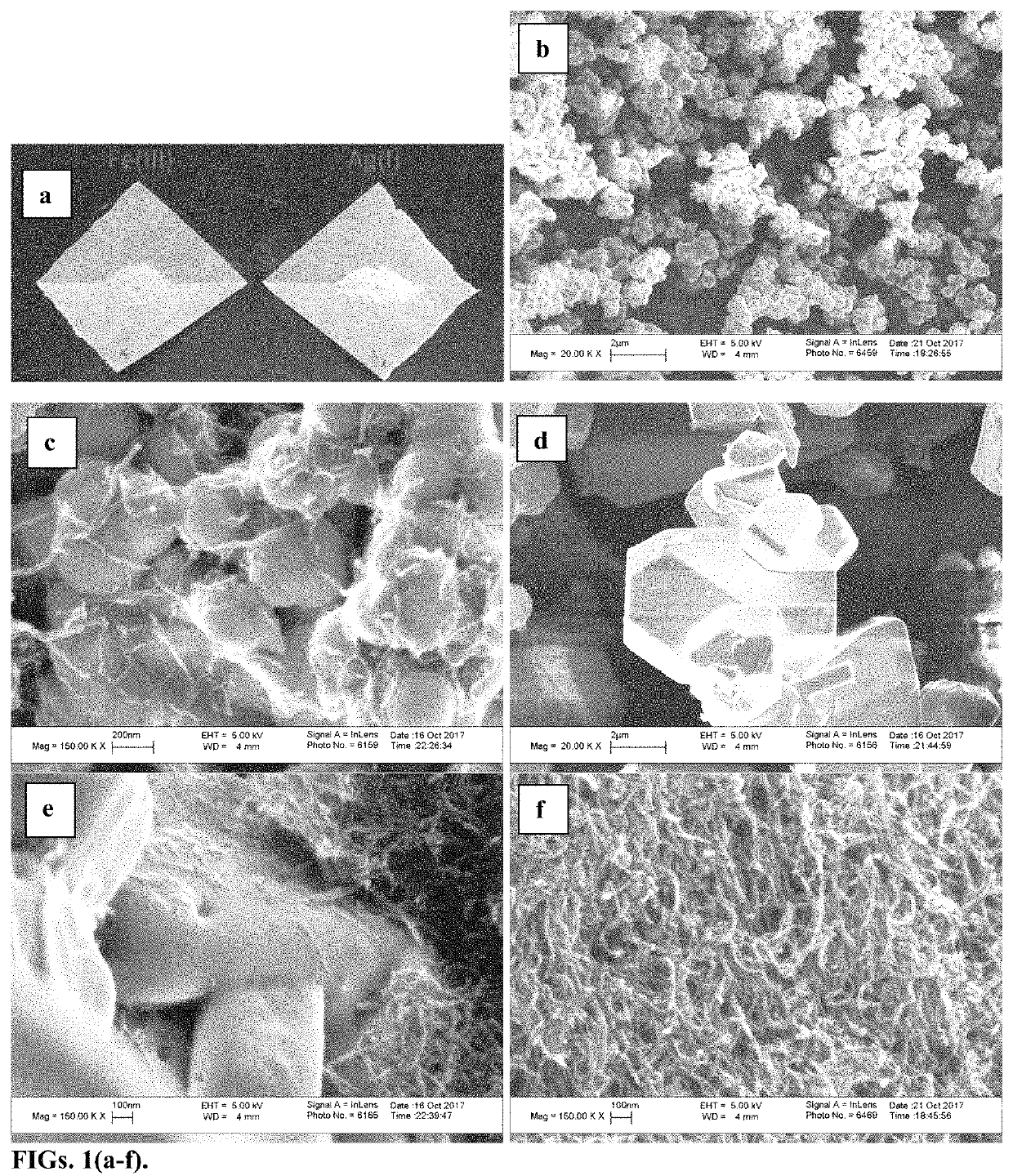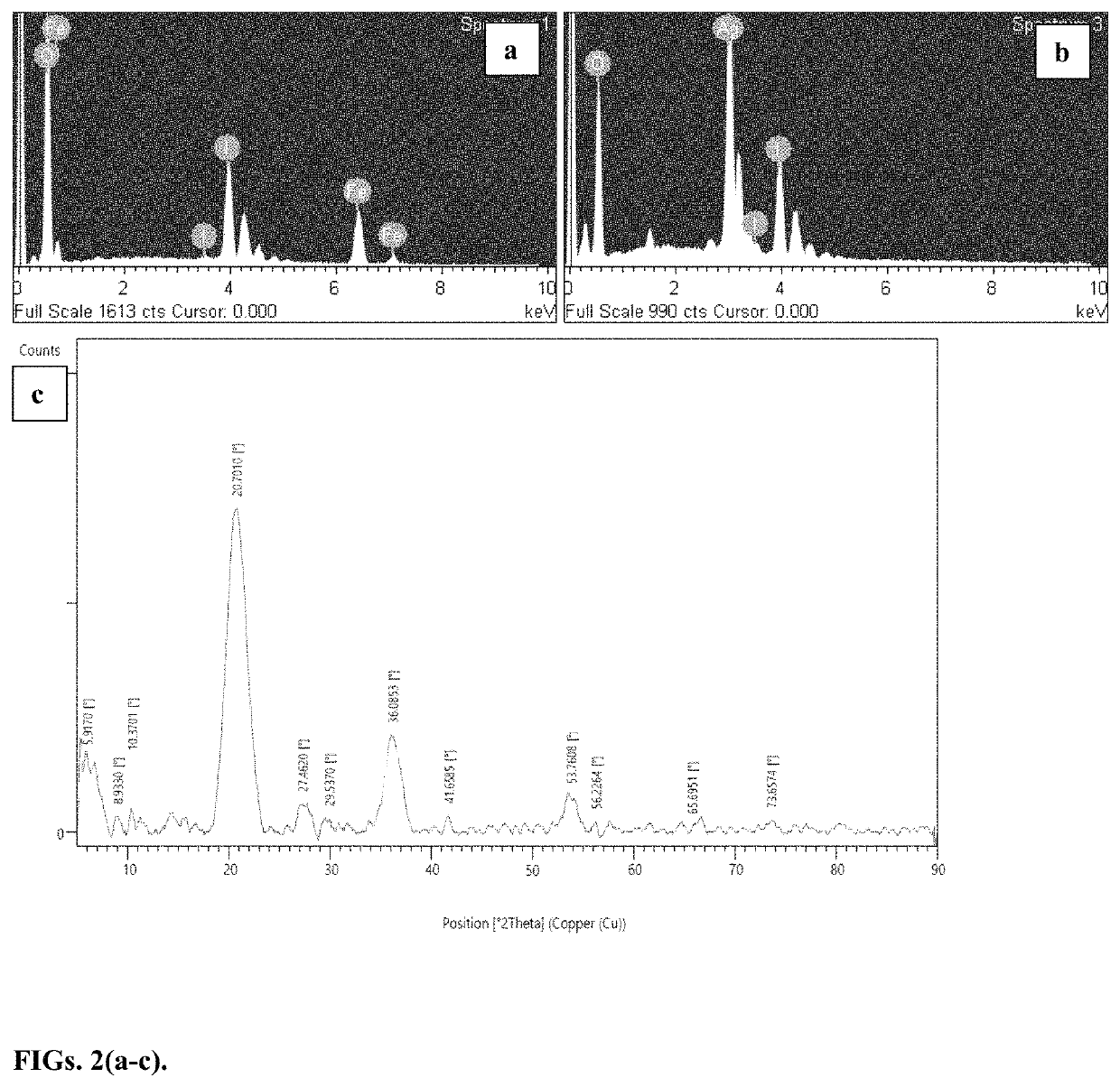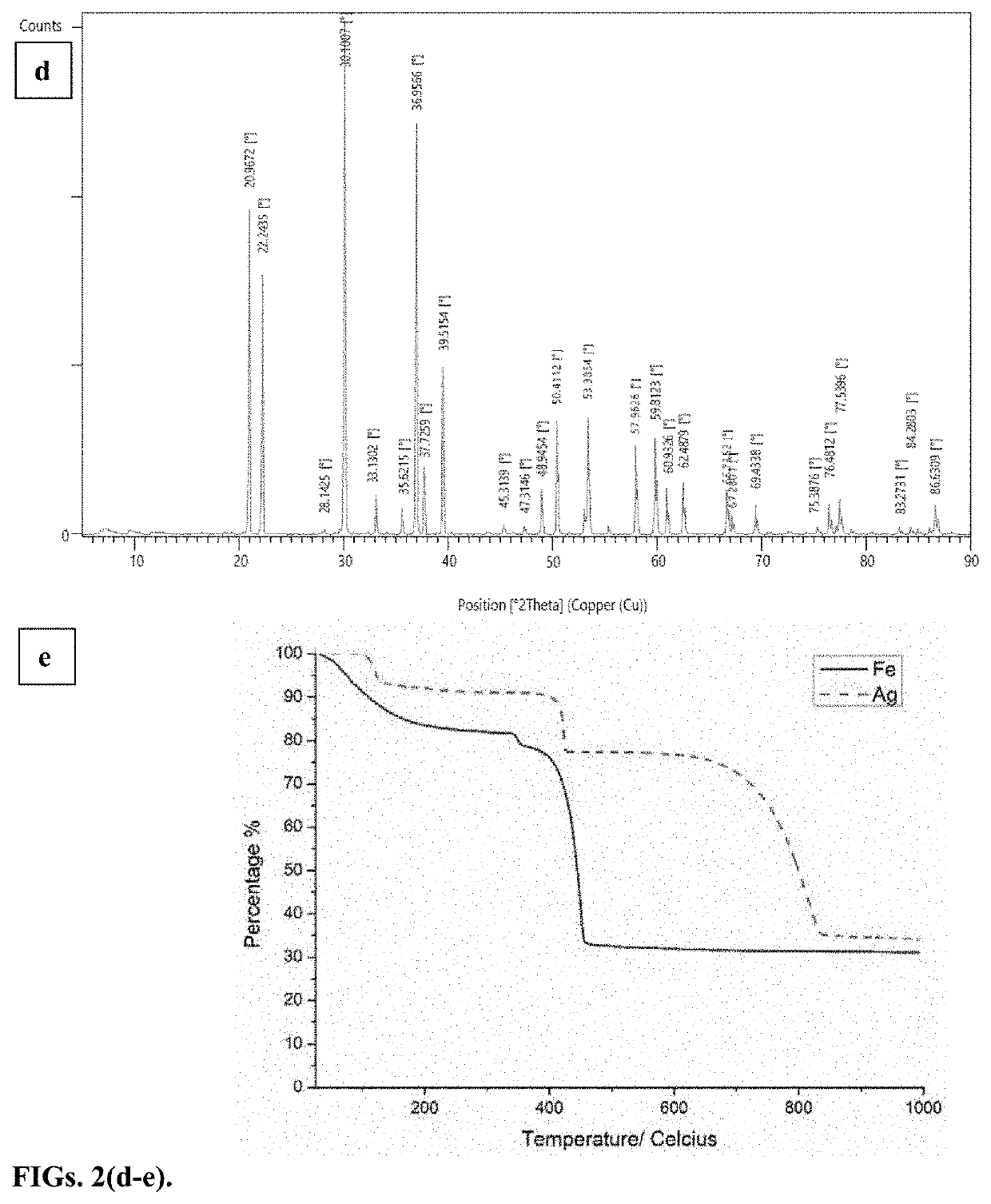High oxidation state periodate battery
a periodate battery, high oxidation state technology, applied in the direction of cell electrodes, electrical equipment, cell components, etc., can solve the problems of limited energy density (volumetric, current batteries cannot provide an effective solution, high energy densities)
- Summary
- Abstract
- Description
- Claims
- Application Information
AI Technical Summary
Benefits of technology
Problems solved by technology
Method used
Image
Examples
Embodiment Construction
[0046]Periodates (IO4−) are strong oxidants with the highest possible oxidation state for iodine. Periodic acid and its Na and K salts have been used in organic reactions. The iodine (VII) and iodine(V) compounds show positive electrode potentials, which makes them viable material for electrochemical storage. Yet there have been few reports on periodate based electrodes where Na and K periodate cathodes have shown a two-electron reduction to IO3− in an alkaline environment. There are also few reports on IO3− based electrodes. A combination of KIO3 cathode and H2SO4 electrolyte has shown the reduction of IO3− to I2. However, the zinc anode reacted with H2SO4, making it a less effective battery. The oxidizing capability of IO4− is pH-dependent and under the right conditions, iodine(VII) is expected to show multi-electron processes and can be reduced beyond iodine(V) to lower oxidation states, thus providing larger capacity. Another reported problem is that alkaline periodates are solu...
PUM
| Property | Measurement | Unit |
|---|---|---|
| pH | aaaaa | aaaaa |
| pH | aaaaa | aaaaa |
| pH | aaaaa | aaaaa |
Abstract
Description
Claims
Application Information
 Login to View More
Login to View More - R&D
- Intellectual Property
- Life Sciences
- Materials
- Tech Scout
- Unparalleled Data Quality
- Higher Quality Content
- 60% Fewer Hallucinations
Browse by: Latest US Patents, China's latest patents, Technical Efficacy Thesaurus, Application Domain, Technology Topic, Popular Technical Reports.
© 2025 PatSnap. All rights reserved.Legal|Privacy policy|Modern Slavery Act Transparency Statement|Sitemap|About US| Contact US: help@patsnap.com



